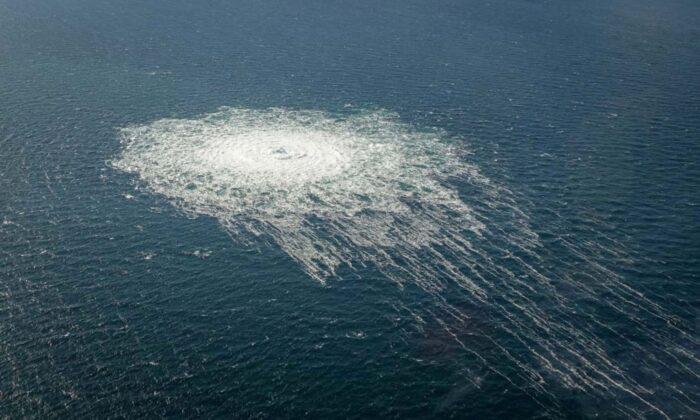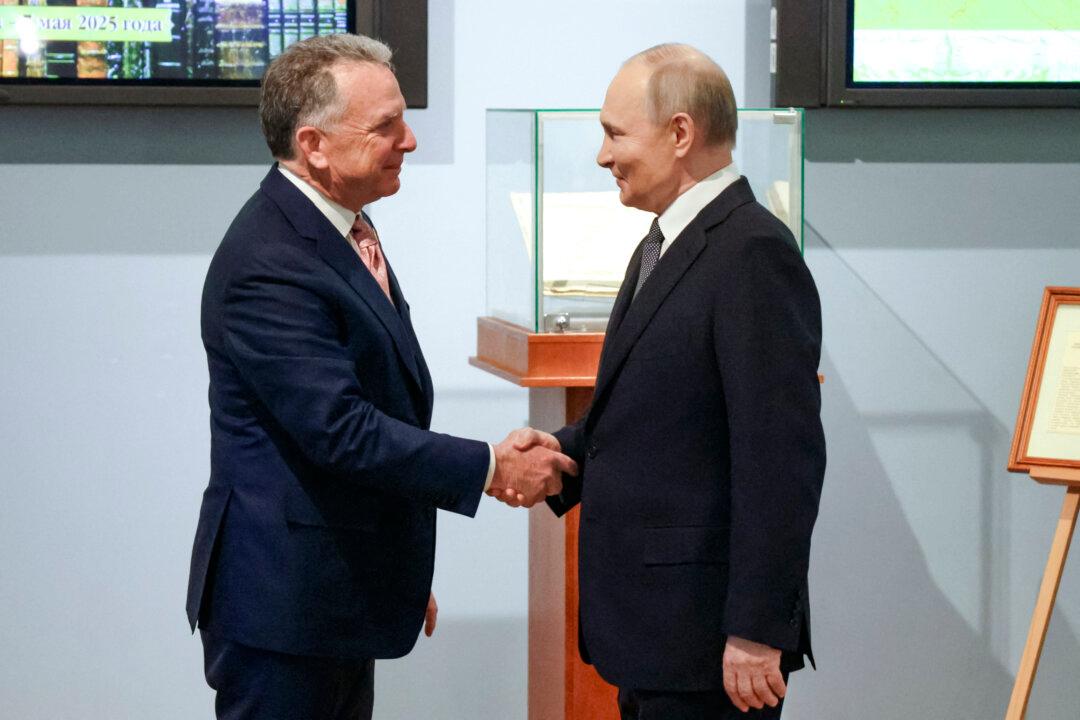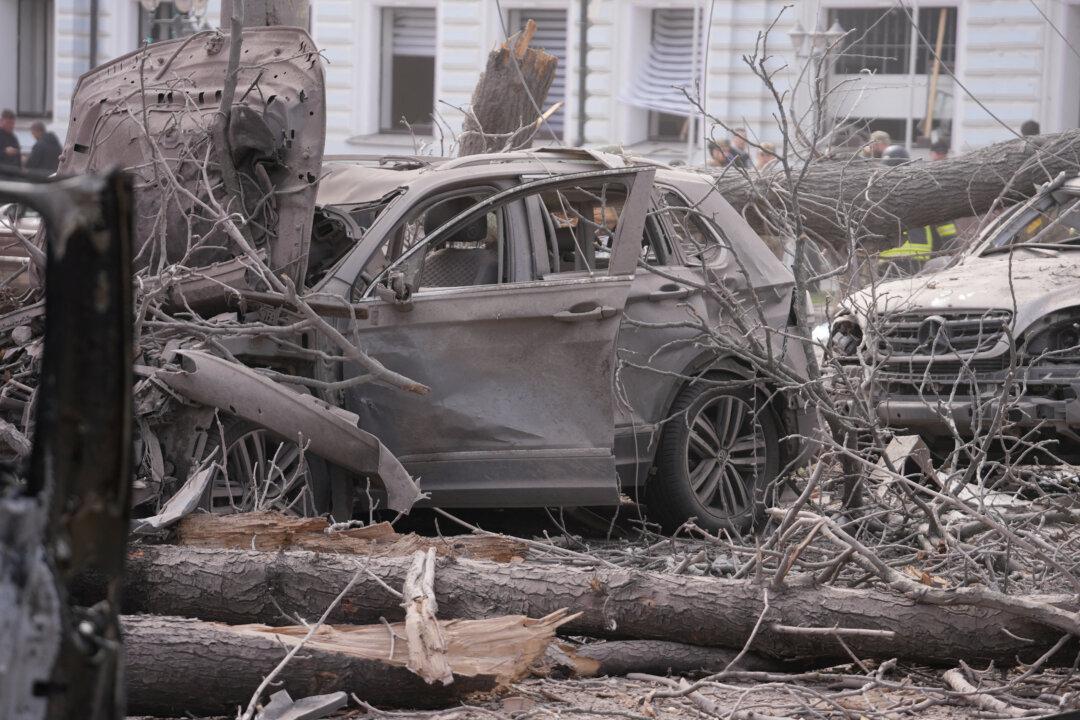A March 7 article in The New York Times suggesting that a shadowy “pro-Ukrainian group” was behind last year’s attack on the Nord Stream gas pipelines is a “red herring” meant to “distract the public,” top Russian officials have said.
“The New York Times article is another red herring aimed at diverting attention from the real culprits by blaming an obscure rebel group,” said Leonid Slutsky, a leading member of Russia’s State Duma (Parliament’s lower house).
“Who would believe an operation of this scope ... could be carried out by a previously unknown sabotage group?” Slutsky, who leads the Duma’s foreign affairs committee, said on the Telegram messaging app.
The New York Times story says that “new intelligence” seen by U.S. officials suggested that last year’s attack on the strategic gas pipelines had been carried out by a “pro-Ukrainian group.”

The U.S. officials cited in the article—all of whom were unnamed—were also quick to assert there was “no evidence” that Ukrainian President Volodymyr Zelenskyy or any of his top aides were involved in the attack.
Nor, the unnamed officials claimed, had the perpetrators acted at the behest of “any Ukrainian government officials.”
The same officials, the article states, “declined to disclose the nature of the intelligence, how it was obtained, or any details of the strength of the evidence it contains.”
Immediately after the article’s publication, Mykhailo Podolyak, an adviser to Zelenskyy, claimed Ukraine was “absolutely not involved” in the attack on the pipeline.
Issue of ‘National Security’
Running under the Baltic Sea, the 760-mile-long Nord Stream pipelines link Russian gas fields to energy terminals in Germany.In September 2022, the pipelines were breached in Swedish and Danish territorial waters, leading to energy shortfalls across Western Europe.
Sweden and Denmark soon concluded the breaches were acts of sabotage. Nevertheless, joint investigations with Germany into the incident were abruptly halted, with the three governments citing concerns over “national security.”
Moscow, for its part, quickly deemed the pipeline breaches a “terrorist act” and has repeatedly called for further investigations.
At one point, Russian officials claimed to have evidence of British complicity in the attack. Moscow, however, has yet to make the alleged evidence public.

For their part, the United States and NATO have also designated the attack as an intentional “act of sabotage.”
But in the five months following the incident, both the U.S. and European press largely downplayed the question of who stood behind the costliest act of sabotage in history.
In early February, veteran journalist Seymour Hersh published a report on the Substack newsletter platform suggesting the United States’ culpability in the disruption of the Nord Stream pipelines.
Citing an anonymous source, Hersh claimed the administration of U.S. President Joe Biden had planned the attack before Russia invaded Ukraine in February 2022.
To support his theory, Hersh cited Biden’s assertion—made shortly before Moscow’s invasion—that “if Russia invades ... then there will be no longer a Nord Stream 2. We will bring an end to it.”
‘Jumping to Conclusions’
On March 8, Andrey Ledenev, minister-counselor at the Russian Embassy in Washington, said the claims made in the New York Times article were meant to obscure the identities of the real culprits.Quoted by Russia’s TASS news agency, Ledenev said that they sought to “shift blame from the statesmen who ordered and coordinated the attacks ... to some abstract individuals.”
“We view anonymous ‘leaks’ as nothing more than an attempt to confuse those who are sincerely trying to get to the bottom of this egregious crime,” he said.
The German government, for its part, has acknowledged the article’s claims while stressing that its own investigations remain ongoing.
“The Federal Public Prosecutor has been investigating the matter since the beginning of October 2022,” a government spokesman said. “It thus has sovereignty over the procedure.”
NSC spokesman John Kirby, for his part, said investigations by Germany, Sweden, and Denmark must be allowed to run their course.
“We need to let these investigations conclude,” he said. “Only then should we be looking at what follow-on actions might or might not be appropriate.”
Reports have since emerged in the German media claiming the attack on the pipelines was carried out by a six-person team on forged passports who rented a yacht in Germany’s Baltic port city of Rostock.
German broadcaster ARD and the Zeit newspaper both reported that the yacht was rented by a Ukrainian company based in Poland, according to investigators who have yet to confirm the identities of those involved.
On March 8, German Defense Minister Boris Pistorius addressed the reports, warning reporters against “jumping to conclusions.”
Pistorius had earlier claimed the attack could have been a “false flag operation” carried out with the aim of blaming Ukraine for the crime.





